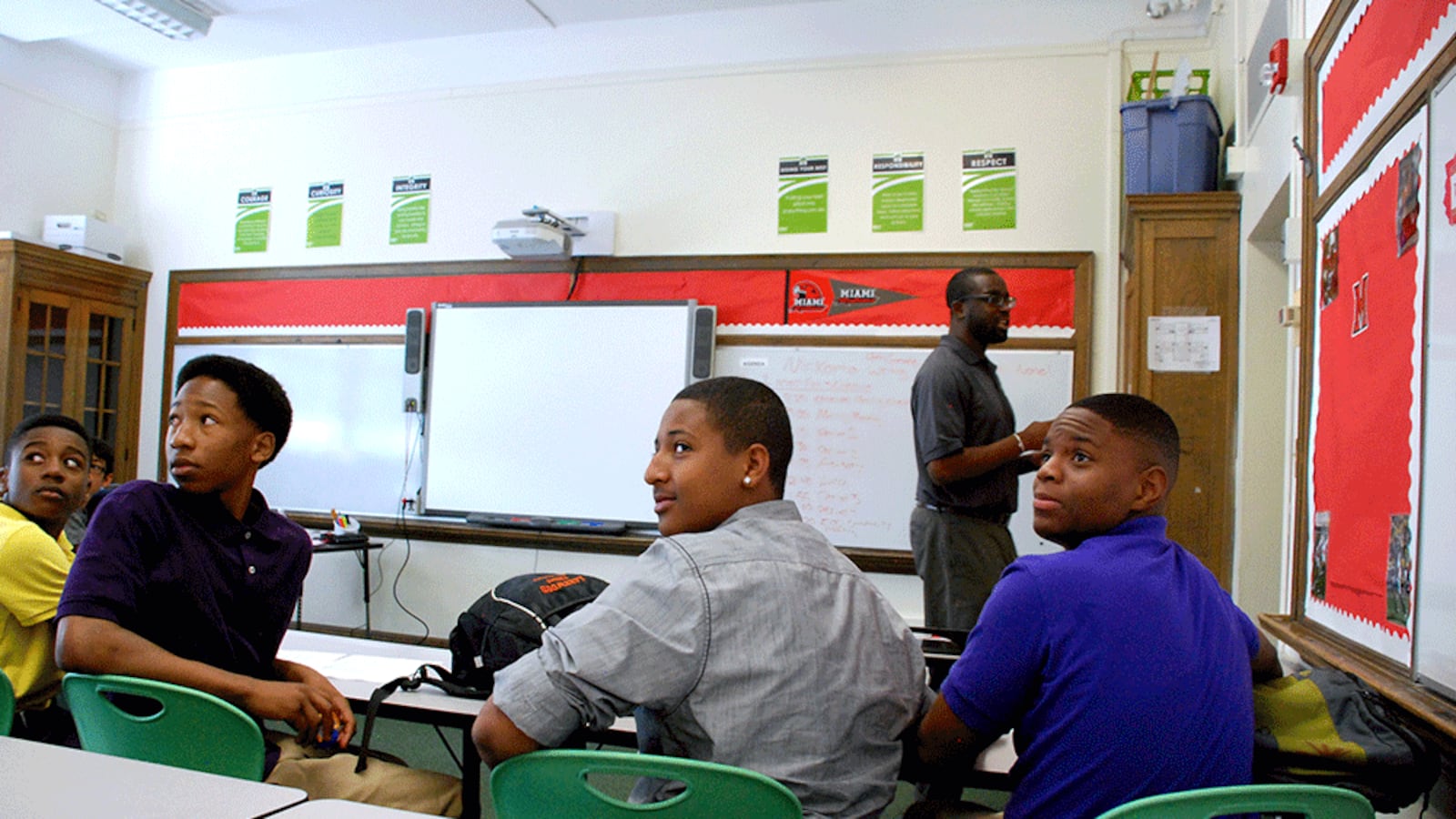DSST Public Schools is hoping to add eight additional new charter schools—four middle and four high schools—to its already-growing network in Denver by 2021.
The charter network submitted eight letters of intent to Denver Public Schools last week proposing plans to open two schools per year in 2017, 2018, 2020, and 2021.
DSST is already in expansion mode. The network currently has nine schools and has been approved to run five more.
The new expansion, if approved, would bring DSST’s total number of schools to 22. That would make DSST the largest charter network in Denver and in Colorado.
Altogether, DPS received 18 letters of intent this year, including the eight from DSST. The letters indicate interest in creating new schools to open in 2016 or later. This year, five are proposed district programs. The remaining 13 are from charter schools.
The letters of intent are non-binding, but give an indication of which schools are likely to submit full charter proposals later in the spring. Final proposals are due on March 20, and district officials will recommend which schools should open by early June.
DSST plans
Under its already-approved plans, DSST is projected to enroll 6,500 students by 2020-21. If the new letters of intent are followed up by proposals, and if those proposals are approved, DSST would enroll about 10,000 students by 2024-25.
That represents a significant chunk of DPS’s secondary school students: The district currently enrolls just over 40,000 students in grades 6-12, which means that if enrollment were to stay constant, DSST would be educating roughly a quarter of all DPS secondary school students by a decade from now.
Bill Kurtz, the director of the network, said DSST’s plan to expand is a response to DPS officials’ Denver Plan, a five-year strategic plan that aims to have 80 percent of all students attending high-performing schools.
“We’ve heard the call, and we think people should be taking this call seriously. Just 33 percent of students in the 6-12 student population are going to high-performing schools,” Kurtz said.
He said submitting plans several years in advance allows both the school and district to plan ahead.
DSST has a strong academic track record. Five of its schools were among the top ten public schools in Denver, according to DPS’s school performance framework in 2013-14. The network has also focused on closing achievement gaps between low- and higher-income students, with some success. Last year, low-income sophomores at its high schools outperformed higher-income peers on some state tests.
But expansion presents challenges. STRIVE Preparatory’s network of charter schools, for instance, saw test scores drop this past year after a period of rapid growth. DSST is already working to address teacher turnover at its schools.
Kurtz said the network is working on improving “quality as well as quantity.”
“That’s part of the reason why we’re not trying to open a lot of schools next year,” he said. “It’s trying to be planful.”
While some charter networks that have started as local schools have expanded to other cities—think of YES Prep or KIPP—Kurtz said DSST’s focus is currently on growing in Denver.
Other plans
The batch of letters of intent submitted last week also includes a mix of school program styles and several brand-new charters.
The five district-run programs are: Denver Dual Language Academy, an ECE-8 that would be located in the near northeast; Public Service Academy, a high school focused on service professions; and three middle schools with special focuses, including an expansion of McAuliffe International School in the near northeast.
As anticipated, University Prep, which currently runs a K-4 school in northeast Denver, submitted a letter of intent for a 360-student K-5 school in the home of the current Pioneer Charter School starting in 2016-17.
The district also received one letter of intent for a new school in Southwest Denver, two to open elementary schools in the near northeast part of the city, and two to open mixed-grade schools also in the near northeast.
The Downtown Denver Expeditionary Middle School submitted a letter of intent to open a school in Central Denver.
Most of the school proposals responded to needs outlined in DPS’s Call for Quality Schools.
Just where all of these programs will go has yet to be determined. The DPS board approved a new facilities placement policy last week that guides which schools will get access to district facilities at a time when building prices in the city have soared and the district’s existing facilities are filling up.
Board member Arturo Jimenez was the sole vote against the policy, which he said “is actually codifying DPS’s role in opening up district facilities to more corporate, privately-run-with-public money charters.”
Kurtz said that DSST had not located facilities for its proposed new schools.
See the full list of school proposals here.
According to DPS, the district has opened 59 new schools since 2008 and has 23 more already approved to open.


